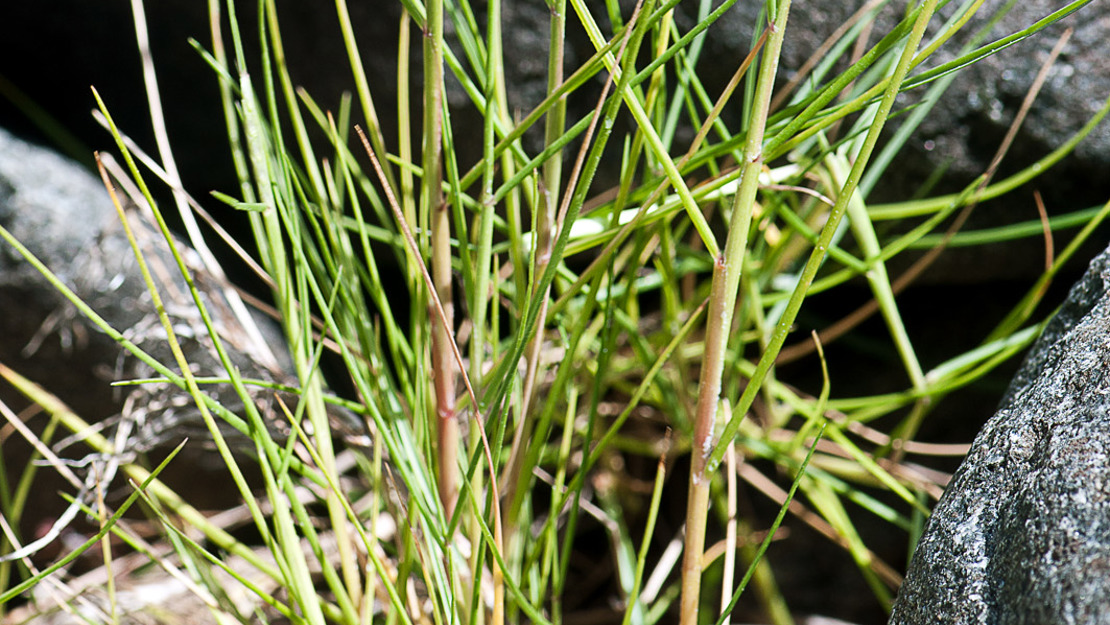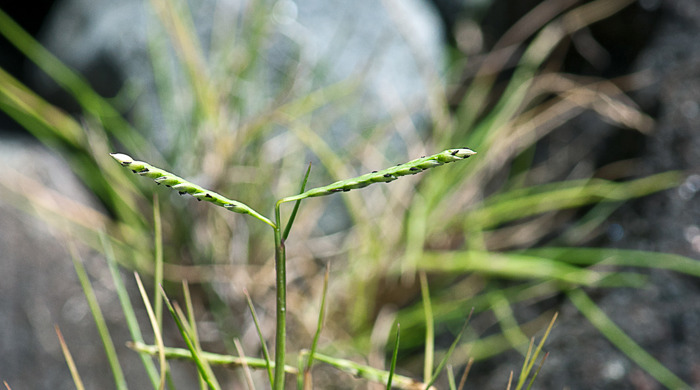Paspalum vaginatum
Salt water paspalum
Family: Poaceae
Origin: North and South America

Regional Pest Management Plan (RPMP) status
- Hauraki Gulf Controlled Area Notice pest
- Parkland with Significant Ecological Areas — Site-led (on-park only)
- Waitākere Ranges Heritage Area priority status
- Whole region — Sustained control
General description
Terrestrial to emergent aquatic decumbent perennial grass. Stolons are long, creeping and form adventitious roots from nodes. Leaves are leathery, grey-green and < 80 x 20 cm long. Flowers borne in summer.
What you need to know
To help protect our environment, from 1 September 2021, you:
- will not be allowed to breed, distribute, release or sell salt water paspalum within the Auckland region.
- will not be allowed to plant salt water paspalum within the Auckland region, unless you are transferring an existing plant on your land to another location within the boundaries of the same property.
- must destroy any salt water paspalum on land that you occupy if it has been planted in breach of the above rules and you are directed to do so by an authorised person.
Habitats
Brackish water, mudflats, mangroves, salt marshes, coastal turfs, riparian and estuarine margins, sand dunes, shingly shores, pastures, shrubland, roadsides.
Dispersal
Sets seed. Vegetative spread from stolons, dispersed by water and sand movement and contamination of machinery and livestock.
Impact on environment
Forms dense mats, excluding native vegetation, altering plant community composition and dominating high priority ecosystems. Can displace burrowing fauna and shift invertebrate assemblages. May alter foraging habitat and food availability for shore birds and spawning and feeding grounds for fish.
Control
Site Management
Follow up treated areas 3 times per year. Encourage natural regeneration of native plants or replant treated areas where possible after 2-3 treatments to establish dense ground cover and minimise reinvasion.
Recommended approaches
Physical control
Method: Dig out.
Plant parts requiring disposal: All parts.
Disposal options: Remove to greenwaste or landfill.
Biocontrol
Biocontrol is currently not available for this species.
Community agrichemical control recommendations
Certified Handler/Experienced agrichemical user: Foliar spray with 100ml glyphosate green per 10L of water.
Caution: When using any herbicide or pesticide please read the label thoroughly to ensure that all instructions and safety requirements are followed.






